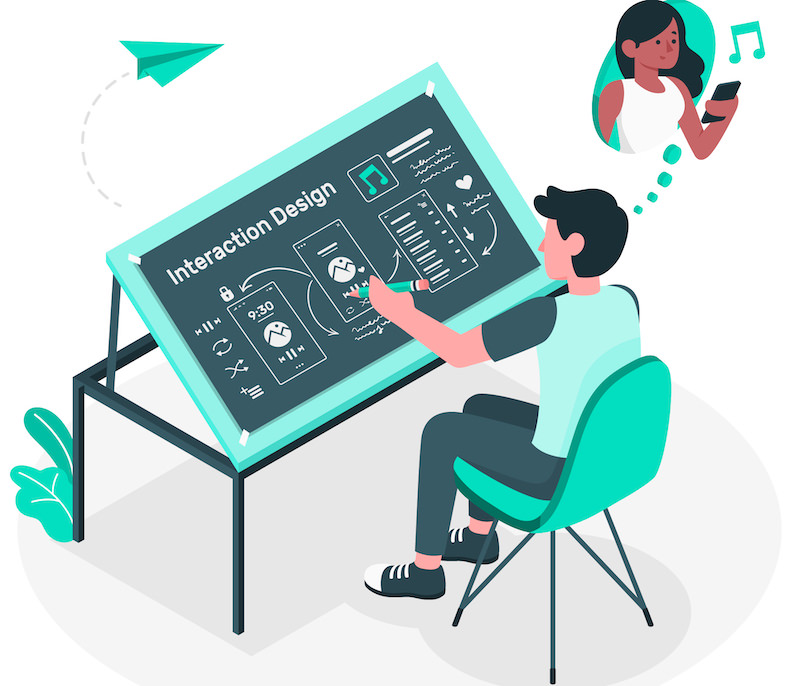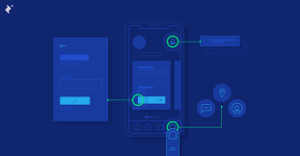
Introduction
Have you ever been curious as to why certain applications or websites feel so smooth and intuitive while others grant you unhappiness? Well, that is where interaction design comes in! Interaction design (IxD) emphasizes creating digital interfaces that are pleasant to use, engaging, and effective. This takes into account human-computer interaction, UI/UX principles, interactive prototyping, and usability testing to ensure the user experience is seamless. In this article, we will review real-world examples of interaction design that makes our digital experiences effortless and fun. Let’s get on to it!
What Is Interaction Design?
Interaction design is a stream of UX design concentrating on user behaviors with digital products. Here, everything from designing the interactive element, like buttons, animations, gestures, and transitions, is done so that users will get a fluid and engaging experience.
Why Is Interaction Design Important?
A proper interaction design offers onward usability that eventually improves customer satisfaction through digital movement. Poor interaction design on the contrary would lead to frustration, abandonment, and poor brand reputation.
Key Principles of Interaction Design
1. Goal-Driven Design
Design should fulfill the intentions of the users, enabling them to reach their goals easily.
2. Feedback and Response
Always notify users of their actions, whether it is by pressing a button, swiping, or submitting.
3. Simplicity and Clarity
Unnecessary complexity certainly gets in the way of usability; therefore, for maximum usability the design must be simple, clear, and intuitive.
4. Accessibility and Inclusivity
Design should facilitate access for all users, including those with disabilities.
5. Consistency Across Platforms
Consistency between web and mobile applications provides users with a single interaction paradigm that can be applied on both platforms without further learning.
Top 10 Real-World Interaction Design Examples
1. Mobile App UI/UX Design
Noticed how smoothly one can maneuver through Instagram? Just a swipe, a tap, and a scroll; actions like liking, commenting, and sharing can be completed with the utmost ease. It is certainly an example of interaction design in action!
2. Website Navigation System
Amazon powers its user-centric shopping experience with easy-to-navigate interfaces, categorized menus, and super-fast access to last searches.
3. Smart Home Interfaces
These kinds of devices like Google Nest or Amazon Echo enable a voice command and touch interface for interacting with smart home features.
4. Gesture-Based Interaction
Picture yourself zooming into an image by pinching two fingers together on your cellphone. Gesture-based interaction makes the experience feel natural.
5. Virtual Reality (VR) Interfaces
Hand tracking and immersive interaction in Oculus and PlayStation VR augment realism in gaming and simulation experiences.
6. Interactive Chatbots
Bots powered by AI, such as ChatGPT or Facebook Messenger bots, provide quick responses and guide users through an interactive experience.
7. Touchscreen Kiosks
Self-service kiosks in airports or restaurants provide means for users to check in, order food, or pay independently.
8. Voice User Interfaces (VUI)
Easy task execution with voice commands is provided by the voice assistants such as Siri, Alexa, and Google Assistant.
9. Drag-and-Drop Features
Drag-and-drop is used by Canva and Trello to enable users to keep moving things around and organize content spontaneously.
10. Interactive Prototyping in UX Design
Before launching a product, UX designers carry out interactive prototypes in tools like Figma or Adobe XD to see if they can pass usability tests and thus are good for development.
Comparison of Good vs. Bad Interaction Design
| Aspect | Good Interaction Design | Bad Interaction Design |
| Navigation | Intuitive and easy to follow | Confusing and cluttered |
| Feedback | Immediate and clear | Delayed or non-existent |
| Consistency | Uniform design across platforms | Different layouts for web & mobile |
| User Control | Undo options available | No way to correct mistakes |
| Accessibility | Designed for all users | Ignores disabled users’ needs |
How to Improve Interaction Design?
Real user usability testing brings pain points and design improvement findings to light. Observing how visitors use a product enables the designers to change something for the better. Interactive prototyping further increases the fidelity of the design, by allowing users to use a clickable model before heading for the actual for having smooth navigation and functionality.

Adopting such UI/UX principles as spacing, fonts, and CTAs would result in superior usability. Keeping human-computer interfaces with reduced cognitive load will give better intuitiveness. Besides that, ensuring that it is made mobile-friendly, as most of the users browse using that medium, makes it very helpful. The designs must responsive and touch-friendly to achieve better accessibility and satisfaction.
Common Mistakes in Interaction Design
- Choices can lead people to confusion and hence require clean designs with structure.
- Accessibility is the space of users with disabilities who may not use the application.
- Provide feedback instantly after an event through animations or confirmation messages.
- Inconsistent UI elements are confusing and may create difficult navigation.
- Error messages should not be vague but rather precise and helpful.
Conclusion
Interaction design is the very core or backbone of great user experiences. Whether you are creating a mobile application, website, or smart device interface, there has to be focus on usability, accessibility, and intuitive navigation. UI/UX principles, human-computer interaction techniques, and usability testing are combined to create products that users love. Do you want to up your game in interaction design? Analyze real-world examples and look up to the best around you!
FAQs
What is the difference between UX design and interaction design?
UX design covers the overall user experience, while interaction design focuses specifically on user interactions within a product.
Why is usability testing important in interaction design?
Usability testing helps identify issues before launch, ensuring a seamless and frustration-free user experience.
What tools are commonly used for interaction design?
Popular tools include Figma, Adobe XD, Sketch, and Axure RP for prototyping and user interface design.
How does interactive prototyping improve design?
It allows designers to test functionalities before development, ensuring a user-friendly and efficient product.
What are some future trends in interaction design?
Voice interfaces, AI-powered interactions, and gesture-based controls are the future of interaction design.